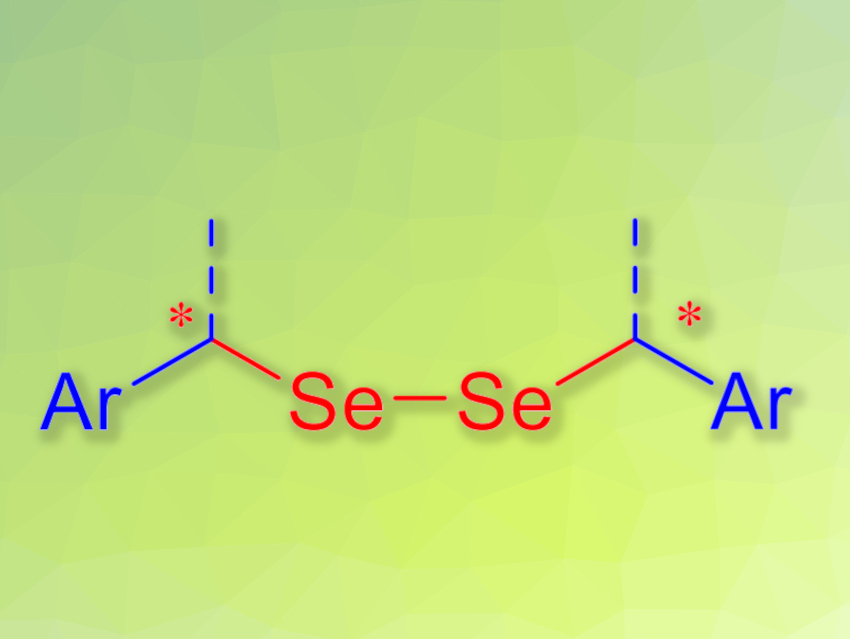Organic diselenides (R–Se–Se–R) can have applications, e.g., in organic and medicinal chemistry, catalysis, or materials chemistry. Diselenides can be synthesized, for example, via reactions of metal diselenides with alkyl halides, the dimerization of selenocyanates, or the oxidative coupling of selenols. However, there are only a few methods for the synthesis of chiral dibenzylic diselenides.
Qingle Zeng, Chengdu University of Technology, China, and colleagues have developed a method for the synthesis of (enantioenriched) dibenzylic diselenides via an SN2-type nucleophilic substitution using (enantioenriched) quaternary ammonium salts and elemental selenium (pictured below). The team used Cs2CO3 as a base and acetonitrile as the solvent, and the reactions were performed at 80 °C. In this approach, the diselenide dianion (Se22–) is generated in situ from elemental selenium under the basic conditions and then attacks the benzyl quaternary ammonium salts.

The desired diselenides were obtained in high to excellent yields. When enantioenriched benzyl quaternary ammonium triflates were used, the resulting chiral benzyl diselenides were obtained in high enantiopurities.
- Synthesis of Dibenzylic Diselenides from Elemental Selenium and Benzylic Quaternary Ammonium Salts,
Feng Chen, Fuhai Li, Qingle Zeng,
Eur. J. Org. Chem. 2021.
https://doi.org/10.1002/ejoc.202101086




